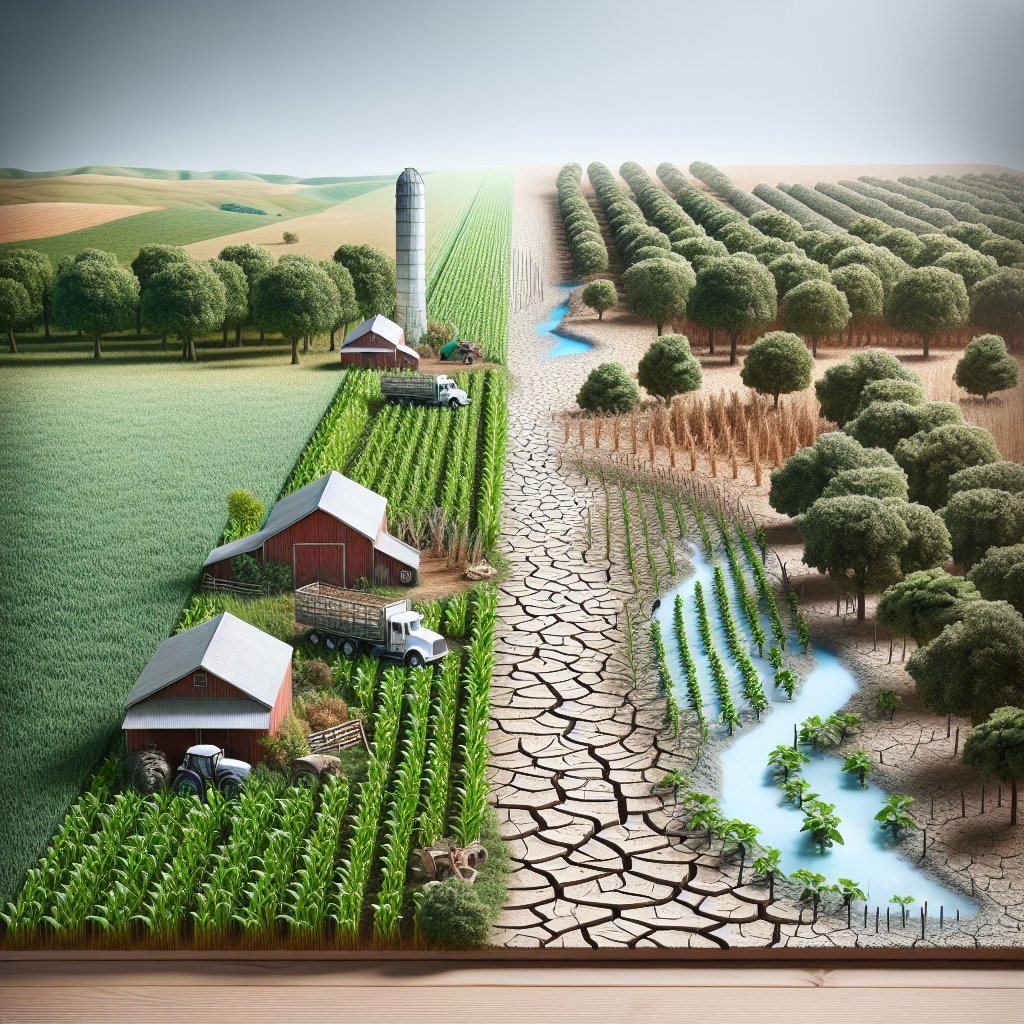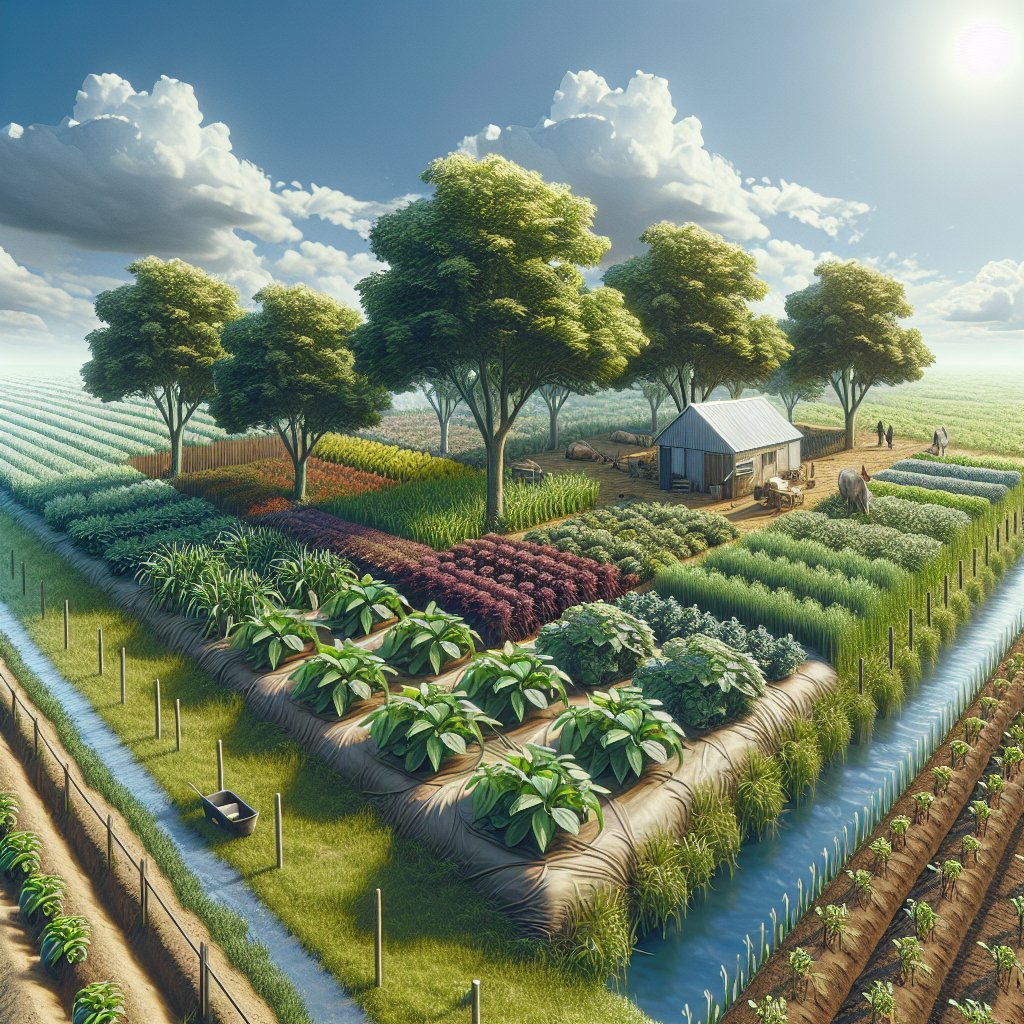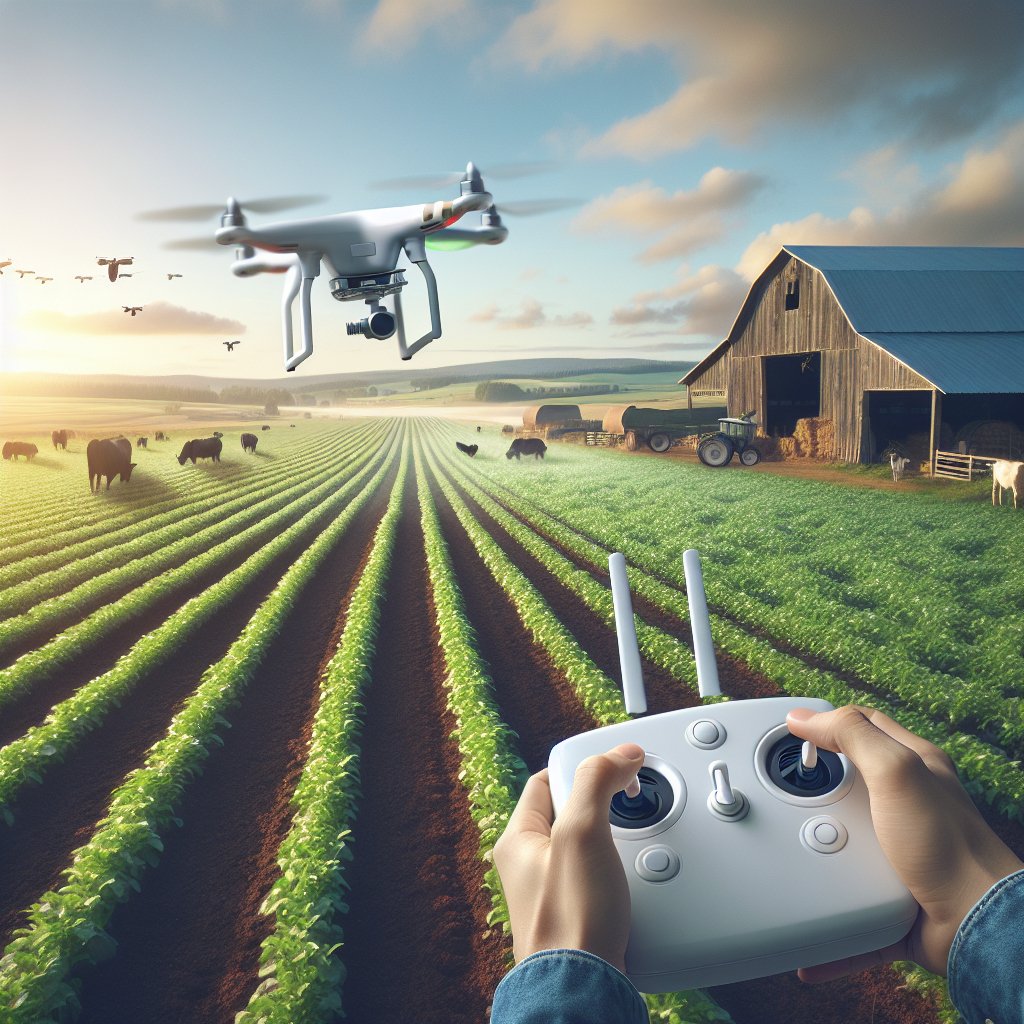Climate change is increasingly recognized as one of the most significant challenges facing agriculture today. As global temperatures rise and weather patterns become more unpredictable, the agricultural sector must adapt to ensure food security and sustainability. This article explores the multifaceted impact of climate change on agriculture, examining both the challenges and potential solutions.
Changing Weather Patterns and Their Effects on Crop Production
One of the most direct impacts of climate change on agriculture is the alteration of weather patterns. These changes can lead to a variety of challenges for crop production, including shifts in growing seasons, increased frequency of extreme weather events, and changes in precipitation patterns.
As temperatures rise, growing seasons in many regions are becoming longer. While this might initially seem beneficial, it can lead to a mismatch between crop growth cycles and the availability of water resources. In some areas, crops may mature too quickly, reducing yields and affecting quality. Conversely, in regions where temperatures become too high, certain crops may no longer be viable, necessitating a shift to more heat-tolerant varieties.
Extreme weather events, such as droughts, floods, and storms, are becoming more frequent and severe due to climate change. These events can devastate crops, leading to significant economic losses for farmers and threatening food security. Droughts can lead to water scarcity, affecting irrigation and reducing crop yields. Floods can wash away topsoil, which is essential for healthy crop growth, and storms can physically damage crops and infrastructure.
Changes in precipitation patterns also pose a significant challenge. Some regions may experience increased rainfall, leading to waterlogging and soil erosion, while others may face reduced rainfall, exacerbating drought conditions. These changes require farmers to adapt their practices, such as implementing more efficient irrigation systems or adopting soil conservation techniques.
Impact on Livestock and Fisheries
Climate change also affects livestock and fisheries, two critical components of the agricultural sector. Rising temperatures and changing weather patterns can have direct and indirect effects on animal health, productivity, and the availability of feed and water resources.
For livestock, heat stress is a major concern. High temperatures can reduce feed intake, growth rates, and reproductive performance in animals. Heat stress can also increase susceptibility to diseases, further impacting productivity. Farmers may need to invest in cooling systems or modify housing structures to mitigate these effects, which can be costly.
Water availability is another critical issue for livestock. As droughts become more frequent, water resources may become scarce, affecting both drinking water for animals and the growth of feed crops. This can lead to increased competition for water between agricultural and non-agricultural uses, driving up costs and potentially leading to conflicts.
Fisheries are also vulnerable to climate change. Rising sea temperatures can affect fish distribution and abundance, impacting both wild fisheries and aquaculture. Ocean acidification, a result of increased carbon dioxide levels, can harm shellfish and other marine organisms, disrupting ecosystems and affecting the livelihoods of those who depend on fishing.
Adaptation Strategies and Technological Innovations
To address the challenges posed by climate change, the agricultural sector must adopt a range of adaptation strategies and technological innovations. These efforts can help mitigate the impacts of climate change and ensure the long-term sustainability of agriculture.
One key strategy is the development and adoption of climate-resilient crop varieties. These crops are bred to withstand extreme weather conditions, such as drought or heat, and can help maintain yields in the face of changing climates. Advances in biotechnology and genetic engineering are playing a crucial role in developing these resilient varieties.
Improved water management practices are also essential. Techniques such as drip irrigation, rainwater harvesting, and the use of drought-resistant crops can help optimize water use and reduce vulnerability to water scarcity. Additionally, precision agriculture technologies, which use data and sensors to optimize resource use, can enhance efficiency and productivity.
Soil health is another critical area of focus. Practices such as crop rotation, cover cropping, and reduced tillage can improve soil structure, enhance nutrient availability, and increase resilience to extreme weather events. These practices also contribute to carbon sequestration, helping to mitigate climate change.
For livestock, strategies such as improving feed efficiency, enhancing animal health management, and adopting heat-tolerant breeds can help mitigate the impacts of climate change. In fisheries, sustainable management practices and the development of aquaculture systems that are resilient to changing conditions are essential.
Policy and Economic Considerations
Effective policy and economic measures are crucial to support the agricultural sector in adapting to climate change. Governments and international organizations play a vital role in providing the necessary resources, incentives, and frameworks to facilitate adaptation efforts.
Financial support, such as subsidies or grants, can help farmers invest in new technologies and practices. Insurance schemes can provide a safety net against the risks associated with extreme weather events, reducing the financial burden on farmers. Additionally, policies that promote research and development in climate-resilient agriculture can drive innovation and dissemination of new technologies.
International cooperation is also essential, as climate change is a global challenge that requires coordinated efforts. Sharing knowledge, resources, and best practices can enhance the capacity of countries to adapt to climate change and ensure food security for all.
In conclusion, climate change poses significant challenges to agriculture, affecting crop production, livestock, and fisheries. However, through adaptation strategies, technological innovations, and supportive policies, the agricultural sector can overcome these challenges and continue to provide food and livelihoods for millions of people worldwide. The path forward requires collaboration, investment, and a commitment to sustainable practices that protect both the environment and the agricultural communities that depend on it.



